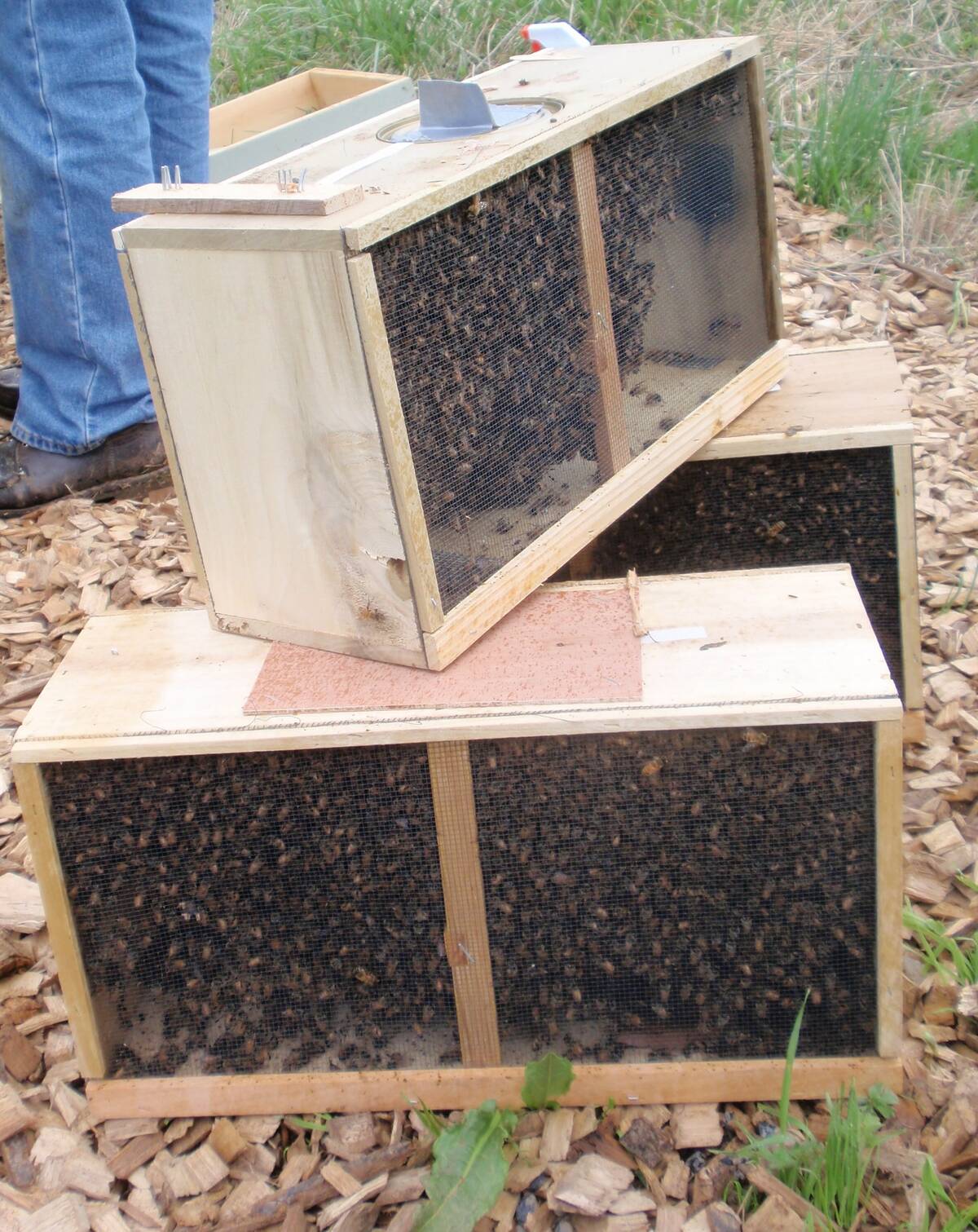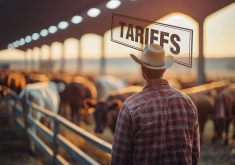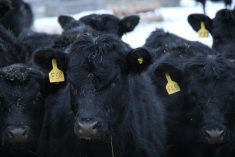The feedlot industry is experiencing a little dip right now, but the sector continues to chug along nicely.
That’s why Doug Price opted to buy Western Feedlots at High River, which has been shuttered since 2016.
“It was a fairly good-sized feedlot and we’re just tearing most of it down except the bunks and re-doing it, so we can get it up and running,” said Price, who owns Korova Feedlots in Acme and operates it and ranches all over the province with his wife and adult children.
Read Also

Canadian beekeepers call for regulatory accountability
Beekeepers say the Canadian Food Inspection Agency should restore U.S. packaged bee shipments, claiming the agency isn’t following evidence.
Price purchased his new feedlot — to be re-christened Rimrock — because he liked the location, which is close to Cargill’s processing plant. He plans to pull the corrals down, replacing wood with steel, and put compacted concrete into the pens (because it’s good for manure management and animal welfare).
Maintenance will be reduced and performance will go up as a result, he said.
Price intends to have his new feedlot open by September, and up to capacity in the next three years. The feedlot will be able to handle 35,000 head, but he said he’ll be happy if he gets it up to 20,000.
Feeding is a high-risk business, said Price, who has run Korova Feeders (which has a 30,000-head capacity) for more than 45 years.
“Sometimes you earn a bit of money and sometimes you lose quite a bit of money,” he said. “Right now, it’s tough sledding. But over the last three to four years, there’s been some times where we’ve made some good profit. The trade issues with beef are not bad right now.”
Trade is the biggest wildcard and Price would like to see ratification of the NAFTA replacement (the United States Mexico Canada Agreement).
“If the new USCMA was signed, that would give us a lot more comfort level going forward,” he said. “We do export a lot of our meat. It’s such a requirement to keep our border open.
“Anytime the border closes or we have trade issues, that’s a quick impact to a nation that is in the export markets.”
The Canadian beef herd is shrinking, but this doesn’t affect the feedlot business very much, he added.
“With the border, it’s a North American market,” said Price.
The big limitation for the Canadian cattle here is the lack of moisture on the Prairies, but the amount of beef produced hasn’t fallen drastically, since cattle are finishing at a heavier weight, and producers are weaning more calves.
Even though Price is optimistic about the industry in general, he thinks this year may be a little tough.
“It is a swinging business and as long as you can be good at what you do, you can ride the lows and participate in the highs,” he said.
A rough few months
Ryan Kasko, also thinks the industry is looking good, even though there’s a slight hiccup right now.
“Generally, in the last few years, the finishing business has been strong,” said the chair of Alberta Cattle Feeders Association. “But in the last few months, it’s taken a big drop. The number of cattle on feed in Alberta and Saskatchewan has gone up. Feedlots have been full and though the packers in Alberta have been processing a lot, the number of cattle coming to market is a little over-balanced, so the market has dropped considerably.”
Canada doesn’t usually import a lot of feeder cattle, “but in the last year, the number of Canadian exported is balanced off with the number that has been imported,” said the general manager of Kasko Cattle Company at Coaldale.
“There’s just a lot more cattle on feed, and that’s putting pressure on the market,” he said.
The American situation is similar. Fat cattle prices have dropped in the past two months.
“No one is in a good mood because feed prices have been going up as well,” he said.
Feed prices have increased because of too much moisture in the U.S. Corn Belt and too little moisture in Western Canada.
Although the beef sector hasn’t been directly affected, trade tensions between the U.S., China and Canada add uncertainty to the market.
“I don’t know what normal is, but there are lot of factors in play right now,” said Kasko.
Newfound harmony
But while global tensions are on the rise, things are headed in the opposite direction here.
After working together on the plebiscite for cattle producer checkoff, the feeders association and Alberta Beef Producers have decided to work more collaboratively.
“Historically, there has been more of an adversarial relationship between the Alberta Beef Producers and the Alberta Cattle Feeders, and we’re trying to find areas where we can work together,” said Kasko.
The two groups joined forces to commission a study by agricultural consultant Serecon. It has been taking a look at the provincial cattle sector, comparing it to cattle markets in several key American states, and identifying areas for improvement, said Janice Tranberg, the new chief executive officer of the Alberta Cattle Feeders Association. (Results from the study are expected to be released in a few weeks.)
The ABP and the feeders association have identified some key areas of common interest and plan to continue working together.
“I think our members expect us to get things done as efficiently as possible and that means working with others who have common goals so we don’t have redundancy,” said Kasko.
A working group made up of members from both organizations and their top executives has met several times and are working on building a more collaborative voice, said Tranbery. They’ve also hosted a joint reception, and are approaching the new provincial agricultural minister as a united front.
“This is a positive step forward and people want to really make this work,” said Tranberg, who previously worked as an assistant deputy minister with the Saskatchewan government, and managed SaskCanola.
Kasko also sees the collaboration as positive, and thinks things look good for the feeding industry as a whole.
“I think that generally our industry is strong,” he said. “We have people that are reinvesting to make their operations the best that they can be, and people see opportunities for the future.
“We have a lot of positive trade opportunities and most of our members are pretty optimistic that the future is going to be good for our industry.”
















